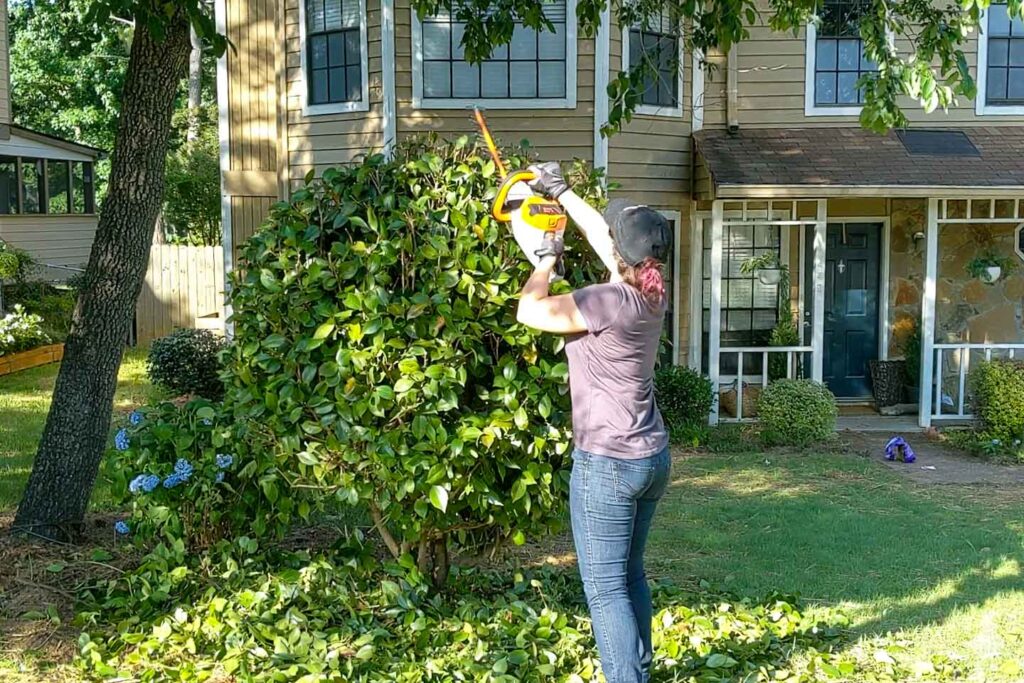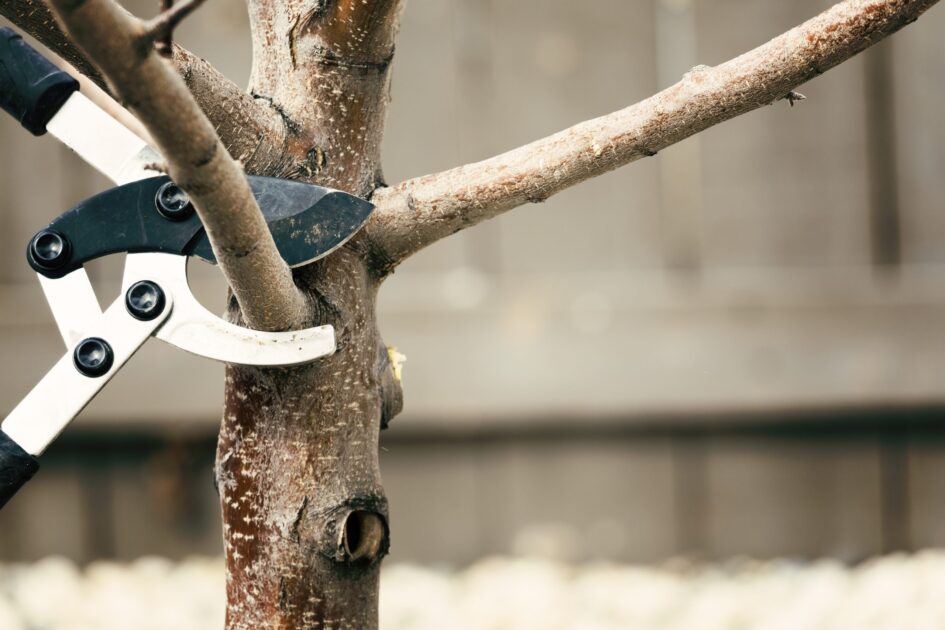Trees are an essential part of our environment, providing us with shade, oxygen, and beauty. They are living organisms that require care and maintenance to thrive and stay healthy. One way to ensure the longevity of your trees is through proper pruning.
Tree pruning involves the selective removal of certain parts of a tree, such as branches or roots, to promote its overall health and growth. It is a delicate process that requires knowledge and expertise, so finding the right tree pruning services near me is crucial.
Understanding the Importance of Tree Pruning
Tree pruning goes beyond simply trimming branches for aesthetic purposes. It plays a vital role in the tree’s overall well-being and can have a significant impact on its growth and structure. Pruning helps to remove dead, decaying, or diseased branches, minimizing the risk of pests and diseases spreading throughout the tree.
Moreover, it allows for better air circulation and sunlight penetration, fostering the tree’s photosynthesis process. Proper pruning techniques also help maintain a balanced canopy, reducing the chances of branch breakage during harsh weather conditions. Overall, tree pruning is an essential practice to ensure the health and longevity of your trees.
Related: Cost-Effective Care for Your Trees

The Science Behind Tree Pruning
Tree pruning is not just a random act of cutting branches; it follows scientific principles that take into account the tree’s biology and growth patterns. Different trees have different pruning requirements, which are determined by factors like the species, age, and overall health of the tree.
Pruning cuts are strategically made at the branch collar, which is the area where the branch meets the trunk or parent branch. This helps facilitate proper healing and prevents the entry of pathogens into the tree’s vascular system.
When pruning, it is important to consider the tree’s natural growth habit and structure. For example, some trees have a central leader, which is a dominant vertical stem that determines the tree’s overall shape. Pruning should be done in a way that preserves the central leader and encourages a strong, well-balanced structure.
Additionally, understanding the tree’s growth patterns is crucial for effective pruning. Trees have different growth habits, such as apical dominance, where the central leader grows more vigorously than the lateral branches. By understanding these growth patterns, arborists can make strategic pruning cuts to promote healthy growth and maintain the tree’s natural form.
Benefits of Regular Tree Pruning
Regular pruning has numerous benefits for trees and property owners alike. Here are a few key advantages:
- Promotes tree health and vigor: By removing dead or diseased branches, pruning helps redirect the tree’s energy towards healthy growth and development. This promotes overall tree health and enhances its ability to withstand environmental stressors.
- Enhances the tree’s natural shape and aesthetic appeal: Proper pruning techniques can enhance the natural form of a tree, making it more visually appealing. By removing overgrown or misshapen branches, pruning can create a more balanced and aesthetically pleasing canopy.
- Reduces the risk of falling branches or limbs: Dead or weakened branches pose a significant risk of falling, especially during storms or strong winds. Regular pruning helps eliminate these hazards, making your property safer for both residents and visitors.
- Improves air circulation and light penetration: Pruning opens up the canopy, allowing for better air circulation and sunlight penetration. This is particularly important for dense trees or those growing in crowded environments. Improved air circulation reduces the risk of fungal diseases, while increased sunlight promotes photosynthesis and overall tree vitality.
- Prevents the spread of pests and diseases: Diseased or infested branches can serve as a breeding ground for pests and diseases. By promptly removing these branches through pruning, you can prevent the spread of harmful organisms and protect the overall health of your tree.
Identifying Expert Tree Pruning Services
When it comes to tree pruning, it is essential to hire professionals with the right expertise, experience, and equipment. Proper tree pruning not only enhances the aesthetic appeal of your landscape but also promotes the health and longevity of your trees. Here are some factors to consider when searching for a tree pruning service near you:
What to Look for in a Tree Pruning Service
1. Certification and accreditation: Ensure that the tree pruning service is certified by reputable organizations such as the International Society of Arboriculture (ISA) or the Tree Care Industry Association (TCIA). Certification indicates that the company meets industry standards and follows best practices in tree care.
2. Experience and expertise: Look for companies that have been in the industry for several years and have a team of qualified arborists. Experienced professionals possess in-depth knowledge about different tree species, pruning techniques, and safety protocols. They can assess the specific needs of your trees and provide tailored pruning solutions.
3. Insurance coverage: Tree pruning can be a risky job, so it’s crucial to hire a company with proper liability insurance. This will protect you from any potential damages or accidents that may occur during the pruning process. Ask the company for proof of insurance and ensure that it covers both property damage and worker’s compensation.
4. Equipment and tools: A reputable tree pruning service should have access to modern equipment and tools necessary for efficient and safe pruning. This includes pruning shears, loppers, chainsaws, and safety gear like helmets and harnesses. Using the right equipment ensures that the pruning is done effectively without causing harm to the tree or the workers.
5. Customer reviews and reputation: Before hiring a tree pruning service, take the time to read customer reviews and testimonials. Look for feedback on their professionalism, quality of work, and customer service. Additionally, ask for references and contact previous clients to get a firsthand account of their experience with the company.

Questions to Ask Potential Tree Pruning Services
1. Do you have references or portfolios of previous pruning projects? Asking for references allows you to gauge the company’s track record and the quality of their work. Request to see before and after photos of pruning projects similar to yours.
2. What is your pruning approach for different tree species? Different tree species have unique growth patterns and pruning requirements. A knowledgeable tree pruning service should be able to explain their approach for each species and provide insights into the benefits of specific pruning techniques.
3. How do you ensure the safety of your workers and my property during the pruning process? Safety should be a top priority for any tree pruning service. Inquire about the safety measures they have in place, such as the use of personal protective equipment, proper tree climbing techniques, and the implementation of industry safety standards.
4. Will you provide me with a detailed estimate of the pruning work? It’s important to have a clear understanding of the cost involved in the pruning project. Ask for a detailed estimate that includes the scope of work, pricing breakdown, and any additional charges that may apply. This will help you compare quotes from different companies and make an informed decision.
Remember, tree pruning is a specialized task that requires expertise and precision. By selecting a reputable and experienced tree pruning service, you can ensure that your trees receive the care they deserve, resulting in a healthier and more beautiful landscape.
The Process of Tree Pruning
Tree pruning is an essential practice in maintaining the health and aesthetics of trees. It involves the careful removal of specific branches to improve the tree’s structure, promote growth, and prevent potential hazards. A reputable tree pruning service understands the importance of a thorough and well-executed pruning process.
Initial Assessment and Planning
Before embarking on any pruning project, a reputable tree pruning service will conduct a detailed initial assessment of the trees involved. This assessment is crucial as it allows the arborists to evaluate the overall health, structure, and specific pruning needs of each tree. By understanding the unique characteristics of the trees, the pruning service can develop a customized pruning plan that ensures the best outcomes for each tree.
During the assessment, the arborists will carefully inspect the trees, looking for signs of disease, decay, or damage. They will also consider the tree’s growth patterns, branch distribution, and overall shape. This comprehensive evaluation enables the pruning service to identify the branches that require attention and determine the appropriate pruning techniques to employ.

The Pruning Process Explained
Once the initial assessment and planning stages are complete, the actual pruning process can begin. This process involves several steps, all aimed at enhancing the tree’s health, structure, and aesthetics.
The first step in the pruning process is the removal of dead, damaged, or diseased branches. These branches not only detract from the tree’s appearance but can also pose safety hazards. A professional tree pruning service will carefully identify these branches and make clean cuts close to the branch collar, ensuring minimal damage to the tree.
In addition to removing unhealthy branches, the pruning service may also address structural issues during the process. This can involve the removal of branches that are crossing or rubbing against each other, as well as those that are growing in undesirable directions. By eliminating these structural issues, the tree’s overall stability and longevity can be improved.
Furthermore, the pruning process can be used to improve the tree’s shape and aesthetics. Skilled arborists can selectively prune branches to enhance the tree’s natural form, creating a visually pleasing and well-balanced appearance. This attention to detail can greatly enhance the overall beauty of the tree and its surroundings.
It’s important to note that excessive pruning or inappropriate techniques can harm the tree. That is why it is crucial to hire a professional tree pruning service that follows the industry’s best practices. These experts understand the delicate balance between removing necessary branches and preserving the tree’s health. By employing proper pruning techniques, they ensure that the tree’s natural form and health are maintained, allowing it to thrive for years to come.
Post-Pruning Care for Healthy Trees
After the pruning process, it’s important to provide proper aftercare for your trees. Here are some essential tips to ensure their continued health and growth:
Essential Aftercare Tips
1. Retain moisture: Water the tree appropriately, especially during periods of drought, to help it recover from pruning stress.
2. Apply mulch: Apply a layer of organic mulch around the base of the tree, but avoid piling it against the trunk. Mulch helps retain moisture, regulate temperature, and suppress weed growth.
3. Monitor for pests and diseases: Regularly inspect your tree for any signs of pest infestations or diseases. Contact a tree care professional if you notice any issues.
Signs of a Well-Pruned Tree
1. Balanced canopy: A well-pruned tree will have a balanced distribution of branches, allowing sunlight to reach all parts of the tree.
2. Healthy foliage: The leaves of a well-pruned tree will be vibrant, shiny, and free from discoloration or signs of decay.
3. Strong branch structure: Proper pruning techniques promote strong and sturdy branching, reducing the risk of breakage.
Maintaining Your Trees Between Pruning Sessions
Regular Tree Maintenance Tips
To keep your trees in optimum health between pruning sessions, consider the following maintenance practices:
- Regular watering and fertilization
- Removal of dead or damaged branches
- Monitoring for pests and diseases
- Avoidance of excessive pruning or topping
When to Call the Experts Again
While regular maintenance can go a long way, there may come a time when you need to call the experts again. If you notice any signs of declining health, structural issues, or unusual growth patterns, it’s best to consult a professional tree pruning service. They can assess the situation and provide appropriate pruning or other tree care solutions to ensure the continued health and beauty of your trees.
In conclusion, tree pruning is an essential aspect of tree care that should not be overlooked. By understanding the importance of pruning, identifying expert services, and providing appropriate aftercare, you can ensure the health and longevity of your trees. So, find the best tree pruning service near you and give your trees the care they deserve!

Leave a Reply